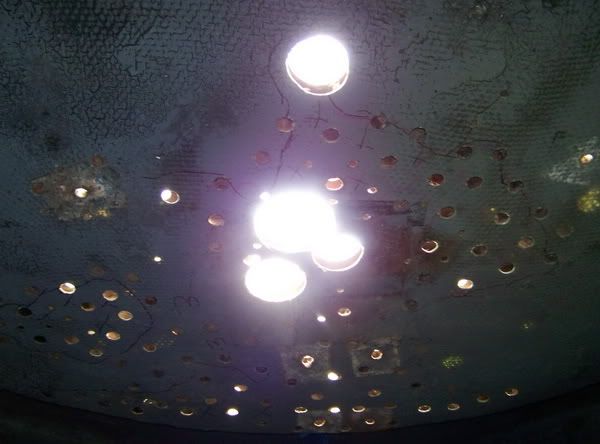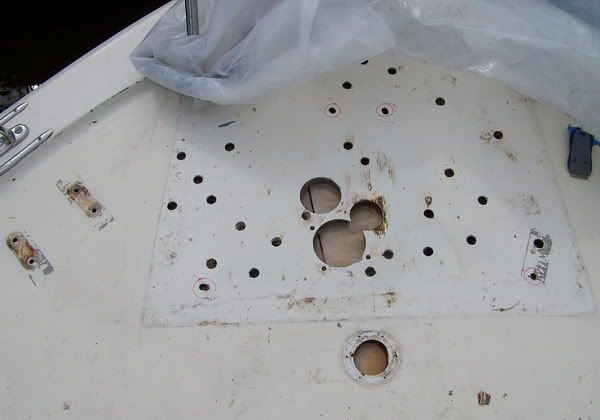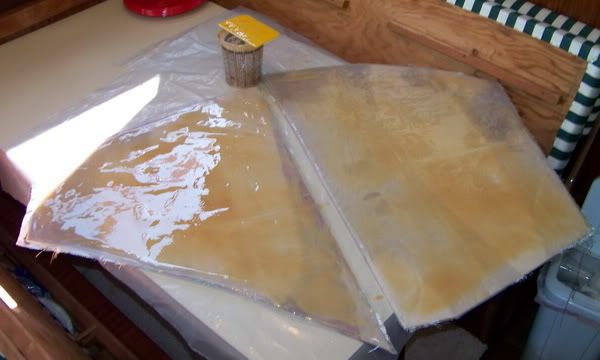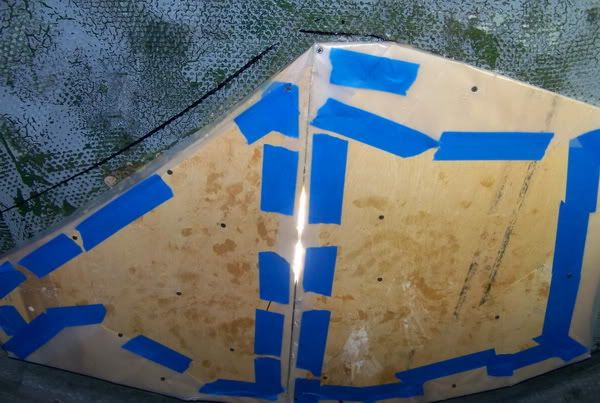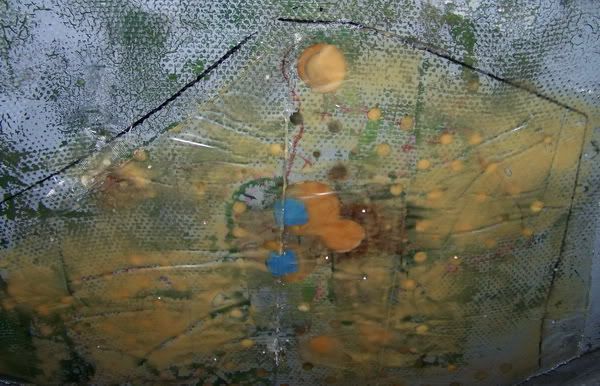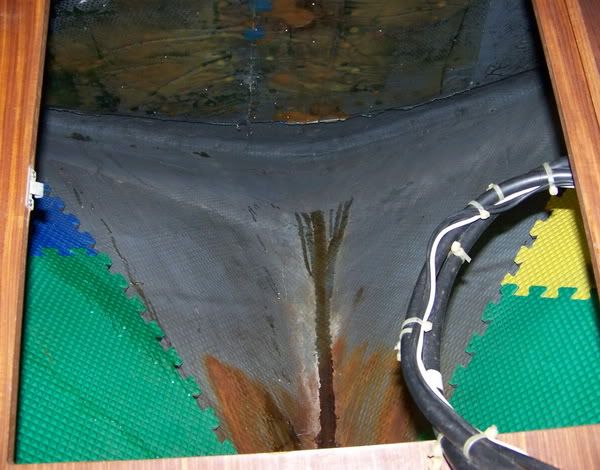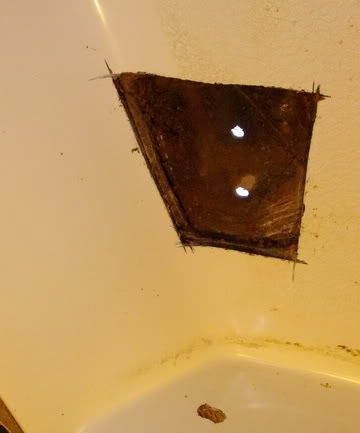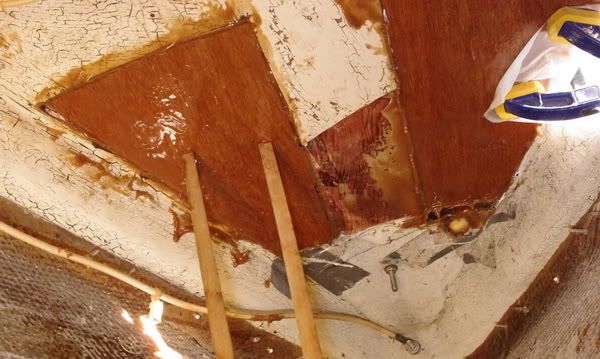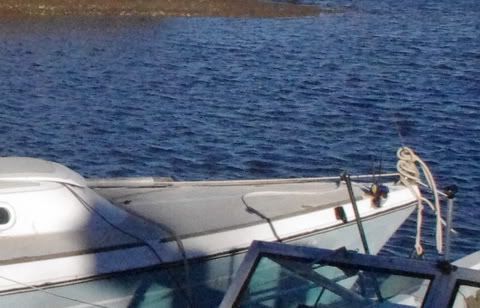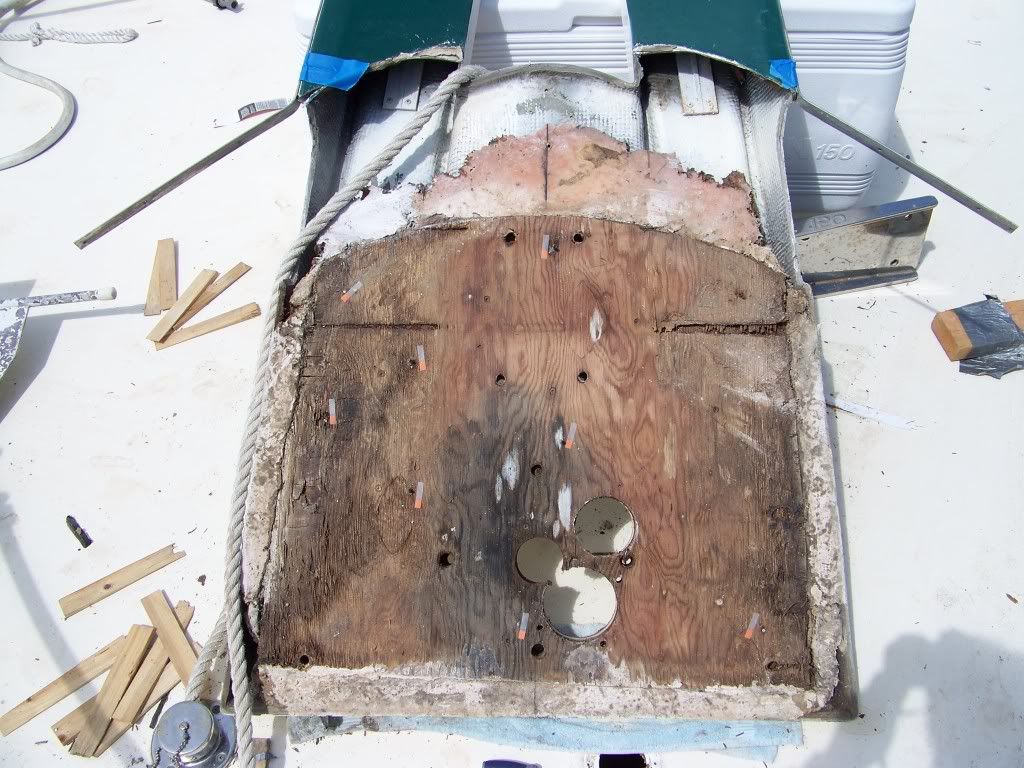bobk
Legendary Member
- Joined
- Aug 27, 2005
- Messages
- 4,097
- Status
- OWNER - I own a Hatteras Yacht
- Hatteras Model
- 48' MOTOR YACHT-Series I (1981 - 1984)
On the way south this year we spent a few hours beating into 4'+ waves on the Chesapeake. We found water on the floor in the forward cabin and this led me to check the anchor chain and rope lockers. The bolts for the anchor chute and pulpit fastenings had water drips on them suggesting leaks. I cleaned the underside of the deck in the area and checked for moisture in the deck core and found elevated moisture readings aft of the three large holes in the picture below (which came from Walt P's boat when he tore off the pulpit and deck for re-coring).
Since the wet area sounds solid when hammered and only extends an inch back from the pulpit, it seems reasonable to pull all the bolts, drop the winch, and dry the cores, then over drill the holes and fill with epoxy and drill new holes through the epoxy filler. I don't want to remove the pulpit which becomes a big repair job.
Walt and I would both like to hear some alternate suggestions for this repair and remounting the chute and winch. By the way, the back side of the pulpit platform is a couple of layers of plywood.... which may also be wet, but there is no practical way to check it short of going through what Walt did.
Also, does anyone know what is behind the black plastic that covers the underside of the pulpit extension?
Bobk
Chateau de Mer
1981 48MY
Since the wet area sounds solid when hammered and only extends an inch back from the pulpit, it seems reasonable to pull all the bolts, drop the winch, and dry the cores, then over drill the holes and fill with epoxy and drill new holes through the epoxy filler. I don't want to remove the pulpit which becomes a big repair job.
Walt and I would both like to hear some alternate suggestions for this repair and remounting the chute and winch. By the way, the back side of the pulpit platform is a couple of layers of plywood.... which may also be wet, but there is no practical way to check it short of going through what Walt did.
Also, does anyone know what is behind the black plastic that covers the underside of the pulpit extension?
Bobk
Chateau de Mer
1981 48MY


